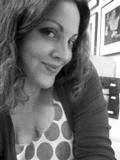“Social media sites offer exposure into another world that one may normally never get access to” says Kate. And that is the intention of Behind Ballet. “We were always coming across these great stories that we wanted to share with everyone.”

...full of 100% stuff that amuses me, or I use as a muse, or happens to catch my eye or fall into my lap...an alternative to it all fiddling about in my brain...
“Social media sites offer exposure into another world that one may normally never get access to” says Kate. And that is the intention of Behind Ballet. “We were always coming across these great stories that we wanted to share with everyone.”



This is a page dedicated to smallholding and all its aspects from growing organic fruit/veg, rearing livestock, gardening, self-sufficiency, rural living, my feelings and dramas, cooking and everything in between!

This won’t need much introduction for me, but needless to say someone has compiled a list of the 100 Best Curator and Museum Blogs...happy reading.



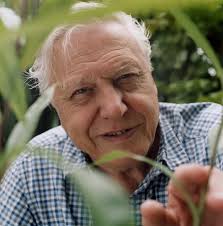
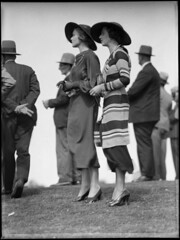
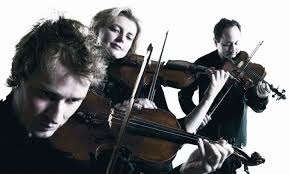

b) There is growing evidence that participatory music education — primarily instrumental lessons, ensemble and choral programs — will turn people into ticket buyers later in life.
...and just because there's always more research to read, here's some more to dig around in.

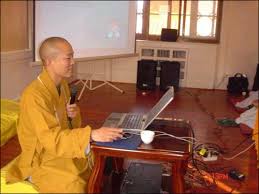
Live Performance Australia’s Ticket Attendance and Revenue Survey 2008 released today, showed that the live entertainment market is still strong with revenues exceeding $1 billion. The commercial sector, as expected, continues to lead in terms of total revenue. While ticket sales declined overall, they returned to 2005 levels, reflecting that 2006 and 2007 were peak years in the current economic cycle. View the media release and survey results here.
...and if you aren't snoozing yet, here's some more for you. The OECD Communications Outlook 2009 presents the most recent comparable data on the performance of the communication sector in OECD countries and on their policy frameworks...snore! (ooops I mean) useful if you are into that kind of thing!)

Jim also writes about a 'crowd sourced exhibition / competition' he is working on, while other contributors reference the work of Nina Simon on 'participatory design'...just reading of this ground breaking approach to exhibition design and conception is inspiring, wonder if that will be in my reading kit for uni? Somehow me thinks not.
Another great take away this week was the question we dare not ask..'Are museums and galleries intimidating?'
Didn't someone tell this man we never talk about the elephant in the corner...bravo Jim, keep it up!
More at http://www.museumnext.org/blog/
Did you realise that the Internet is now the most consumed media in Australia?
According to the 2009 Nielsen Annual Internet and Technology Report the average Australian spends 16.1 hours per week online. This is compared to TV at 12.0 hours per week, Radio at 8.8 hours, Video at 5.4 hours, Online radio at 4.6 hours, PC video at 4.6 hours, mobile at 3.7 hours, newspaper at 2.8 hours and magazines at 2 hours.
Hold on….Australians spend more time online than consuming TV & Newspaper combined? More time online than Radio, Newspaper and Magazines combined?
So the big question for business is: are your marketing resources being allocated to the right media?
Why does the average business automatically resort to TV / Radio/ Press when devising a marketing campaign?
Of course there are issues of target markets, cost-effectiveness and clutter with all media decisions, but I am alarmed by the number of businesses still marketing like it was 1999.
If your customers are now spending more time online than they are consuming other media, shouldn’t you be allocating more of your marketing resources to a superior web presence?
Shouldn’t you be worried about not being found at the top of relevant searches?
Shouldn’t you be trying to give potential customers as much great information as possible on your website to assist them in doing business with you?
Online is now your customer’s number one media priority…is it yours?

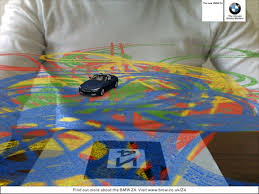
"What exactly is Augmented Reality? According to Jeff Crouse of the Eyebeam Art and Technology Center, "AR is where you have a special symbol on a physical object that a computer can recognize. So when a camera looks at that object, you can superimpose other things in 3D space around that symbol."
Or to put it another way, Augmented Reality lets you see things that aren't really there, but only through a lens (currently your webcam or mobile phone).
It's hard to describe to people - one of those 'you gotta see it' things. But make no mistake, whatever the 'thing' is, it's coming, and it's going to create an entertainment and marketing tsunami that will make the Internet look like a pond ripple. The key shift will likely occur when the lens becomes wearable. Invisible even. Contacts or glasses that look just like the ones you wear now, allowing you to cross into a 3D interactive world seamlessly transposed onto your reality. To quote Keanu Reeves: "... Whoa."




CAMRA (Cultural Asset Mapping in Regional Australia) is a major Australian Research Council and industry funded project which aims to provide planners, policy-makers and local communities with the information they need to plan for a future in regional Australia that integrates the effective development of the arts and cultural industries.
The project runs for five years from 2008 to 2013 and is a partnership between seventeen organisations, including four universities.
The aims are
'In a world-first conference, the Wikimedia Australia community will this week sit down with more than 170 senior executives from the nation’s largest cultural institutions – from the National Gallery to the Parliamentary Library – to devise strategies to better share Australia's cultural heritage.
Called ‘GLAM-WIKI: Finding Common Ground,’ the event at the Australian War Memorial in Canberra on August 6-7 brings together Galleries, Libraries, Archives, Museums (GLAM) with Wikimedia Australia, the all-volunteer force that brings Australian content to the Wikipedia site.
GLAM-WIKI convener and Wikimedia Australia vice-president Liam Wyatt says the conference aims to increase the availability of Australian and New Zealand cultural content through Wikipedia in a sustainable way through collaboration and the open source treatment of cultural items.'
To visit the official wiki of GLAM-Wiki see here
